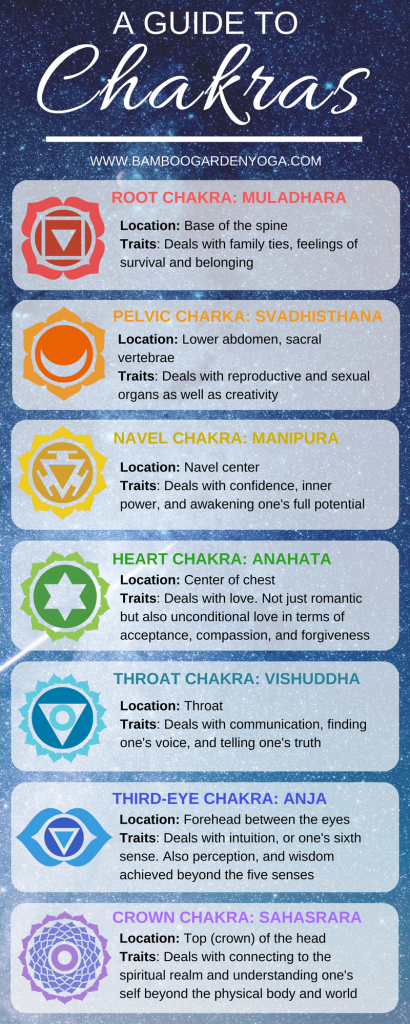A Guide to Chakras
For some people, yoga classes are just a fun type of exercise. While not everyone takes much stock in the spiritual root of yoga, it is in fact there. If you’ve been to a yoga class you might have heard your instructor say something about “chakras”. If you sat there confused or are still wondering what exactly a chakra is, don’t worry we’re here to explain.
What are Chakras?
According to yoga tradition, there are parts of the body that cannot be touched or seen where energy flows through. Chakras are the seven points in the body that are the vortexes of this energy. If a chakra becomes blocked it will trigger a physical, emotional, or mental imbalance. Yoga is a physical practice that helps align and unblock these chakras. So, yoga is about balance both physically and in terms of your body energy.
In yoga, chakras are seen as the blueprints of your life and health. Now, we’re not saying you have to believe this but if you have a persistent health problem there’s no harm in trying to unblock your chakras to see if that helps.
Root Chakra: Muladhara
The root chakra is located at the base of the spine and is associated with the color red. It’s said to govern your family ties as well as feelings of survival, belonging, and guardedness. This chakra houses your earliest memories and basic needs. When it’s out of balance it’s believed to cause low self-esteem, self-destructive behaviors, and neediness.
Sacral or Pelvic Charka: Svadhisthana
This chakra is associated with the color orange and as the name implies it’s located in the pelvic or lower abdominal region. As you would expect with a chakra in this region it influenced reproductive and sexual organs. It’s also said to have an impact on creativity. So if you’re looking to let the creativity and fertility in your life flow make sure this chakra is balanced.
Navel Chakra: Manipura
Manipura is associated with the color yellow and is located in the navel region (as you probably guessed by the name). When this chakra is balanced you’ll feel alive and confident. Manipura will help awaken your full potential and inner power. When it’s blocked or unbalanced though it can make one feel stagnant or fearful.
Heart Chakra: Anahata
Anahata is located in the center of the chest (near the heart of course) and is associated with the color green. This chakra is all about love, but not only romantic love. It deals with the power of unconditional love through compassion, acceptance, and forgiveness.
Throat Chakra: Vishuddha
Located in the throat and associated with the color blue, vishuddha deals with communication and truth. An open throat chakra allows one to have healthy communication, find their voice, and speak their truth. It also helps with listening to others without judgment. When it becomes unbalance it can cause miscommunication, gossiping, and an inability to express one’s self.
Third-Eye Chakra: Anja
The third-eye chakra, associated with the color indigo, is located in between the eyes on the forehead. This chakra is about intuition or one’s sixth sense. It is also important since it impacts how the rest of the chakras function. When anja is balanced one will have insight. Opening up this chakra will help you get perspective and wisdom that doesn’t come with the other five senses.
Crown Chakra: Sahasrara
The crown chakra is associated with the color violet or white (clear). It’s located at the top of the head. This chakra connects to the spiritual realm. It helps you understand yourself beyond the physical world and self. When this chakra is balanced it will make you feel free in any situation but when it is blocked it can make you feel that happiness can only come from the outside.
If you feel like your life is out of balance or you have mental, emotional or physical pain take a look at your chakras. Unblocking them and aligning them has been proven to help. Whether you believe in chakras or not, yoga does wonderful things for physical and mental health. Sign up for a yoga class today to feel the benefits yourself. Namaste!

 561-665-1770
561-665-1770
